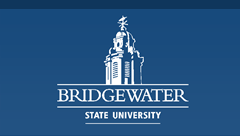
Abstract
Three peer-reviewed research articles demonstrated benefits in using the articulatory-kinematic approaches of sound production treatment (SPT) and speech motor learning (SML) for intervention of patients diagnoses with apraxia of speech (AOS) concomitant with aphasia over the age of 50. This CAT was intended to review and compare the treatment maintenance between the two approaches using a specific search question; however, there was limited evidence for the specified population in that question. Although both approaches warranted positive outcomes, the SML approach may demonstrate a stronger linkage to the underlying features of apraxia of speech based on the method’s rationale. Through the approach, the individual is expected to generalize the rules for planning by relearning the centralized motor plans for speech motor movements (Wambaugh et al., 2013). Also differing from SPT, the SML approach involves the individual learning to internally predict controls of movements to independently generate speech.The SML approach demonstrated greater maintenance gains using traditional treatments compared to the SPT that was reviewed using both intensive and traditional treatments (van der Merwe, 2011; Wambaugh et al., 2013). Although the SML approach was implemented for more sessions than the SPT, it was only greater by one session. This may lead to the assumption that the SML approach demonstrates greater gains due to the less intensive practice schedule yielding stronger maintenance compared to the more intensive SPT schedule.
Recommended Citation
Whiting, Kalli B.
(2022)
Comparison of Maintenance Gains From Two Treatment Approaches for Patients Diagnosed with Apraxia of Speech and Broca’s Aphasia: A Critically Appraised Topic.
The Graduate Review, 7, 131-136.
Available at: https://vc.bridgew.edu/grad_rev/vol7/iss1/17
Included in
Geriatrics Commons, Interprofessional Education Commons, Speech Pathology and Audiology Commons
